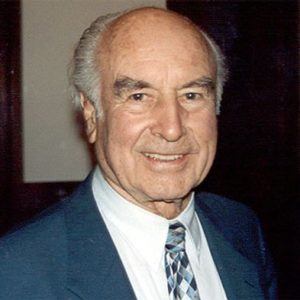Albert Hofmann (1906-2008) was a Swiss scientist and the first person to synthesize and ingest LSD (lysergic acid diethylamide).1 He was also the first to isolate and synthesize the psychedelic mushroom compounds psilocybin and psilocin. 2–4 In addition, Hofmann was the founding member of the Beckley Foundation’s Scientific Advisory Board.
Hofmann earned his doctorate in chemistry from the University of Zurich in 1929. He went to work at Sandoz Laboratories (now owned by Novartis) in Basel, Switzerland and experimented with a fungus called ergot that forms on rye. His goal was to find out if any components of the fungus or their derivatives could be used as pharmaceuticals to treat respiratory and circulatory conditions.
The Synthesis of LSD-25
In 1938, Hofmann isolated the twenty-fifth ergot derivative, LSD. Due to changing work priorities, he initially set it aside until April 1943 when he went back to his therapeutic research. As he describes in his 1979 autobiography LSD, My Problem Child, Hofmann accidentally ingested some of the compound while working with it. He describes the experience which lasted about two hours as “an uninterrupted stream of fantastic pictures, extraordinary shapes with intense, kaleidoscopic play of colors.” A true scientist, the next day Hofmann purposely ingested 0.25 mg of the LSD to make sure that is what caused his symptoms. He experienced severe dizziness and anxiety and headed home. He started riding home on his bicycle (known in the psychedelic world as ‘bicycle day’) when more LSD effects kicked in. He called it a ‘horror trip.’ After he got home, he experienced delusions that his neighbor was an evil witch, and he thought he was going to die.
It turned out LSD was a very promising psychiatric drug. Sandoz promoted it to treat psychiatric conditions like schizophrenia under the trade name Delysid, and according to Hofmann, it was used legally for 15 years in psychiatric treatment and human studies. In the 1960s, however, LSD found its way to artists, writers, and actors and eventually became part of the street drug scene. New York and California outlawed LSD in 1966 and the US government ban followed in 1970.
More Hallucinogenic Discoveries
In 1958, Hofmann discovered the hallucinogenic tryptamine 4-AcO-DET (4-acetoxy-N,N-diethyltryptamine) while working at Sandoz. He went on to become the director of natural products research at Sandoz and focused on studying the hallucinogenic substances found in Mexican mushrooms and other plants.5–7 Besides psilocybin mushrooms, Hofmann was interested in the seeds of a species of Mexican morning glory called Turbina corymbosa. His research found its active component is very similar to LSD—lysergic acid amide or LSA for short.8
Hofmann authored over 100 scientific articles throughout his career. His legacy and work with LSD are carried on by Rick Doblin and MAPS (the Multidisciplinary Association of Psychedelic Studies) in Santa Cruz, California. More information on Albert Hofmann is found via The Albert Hofmann Foundation and MAPS.

